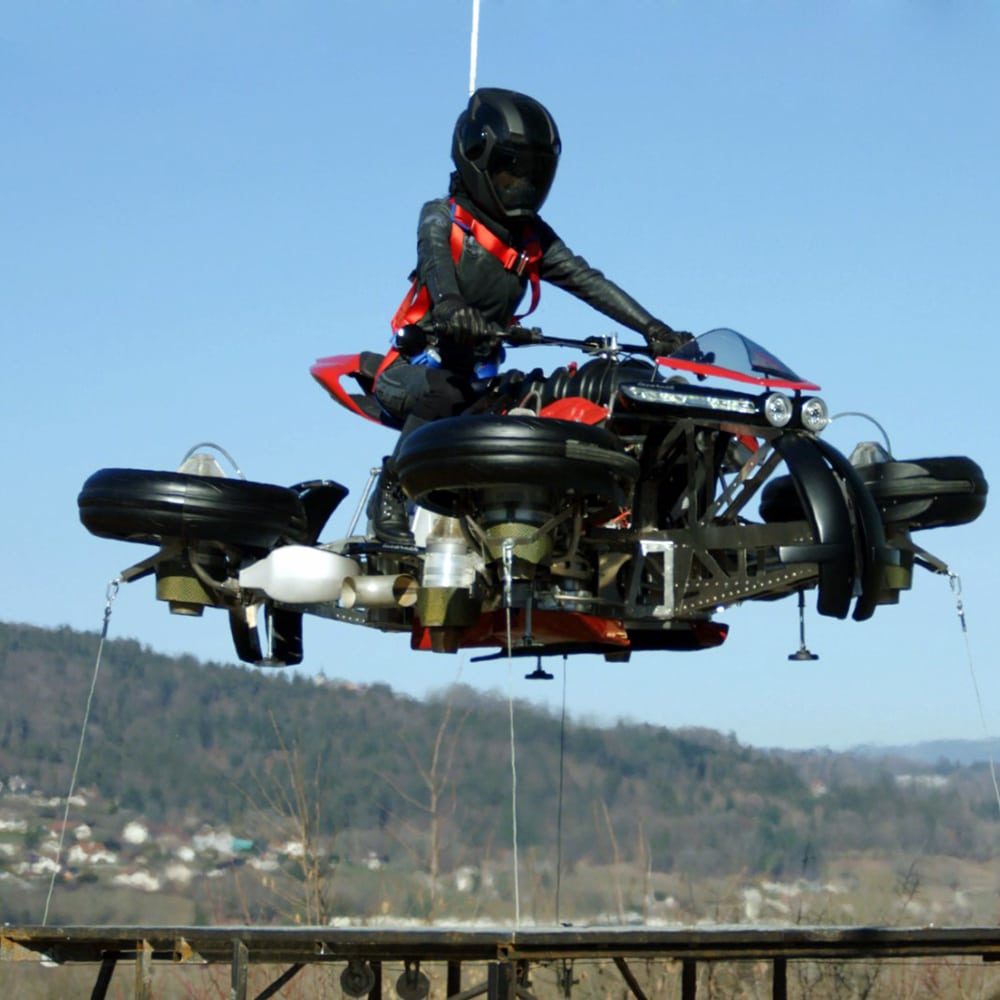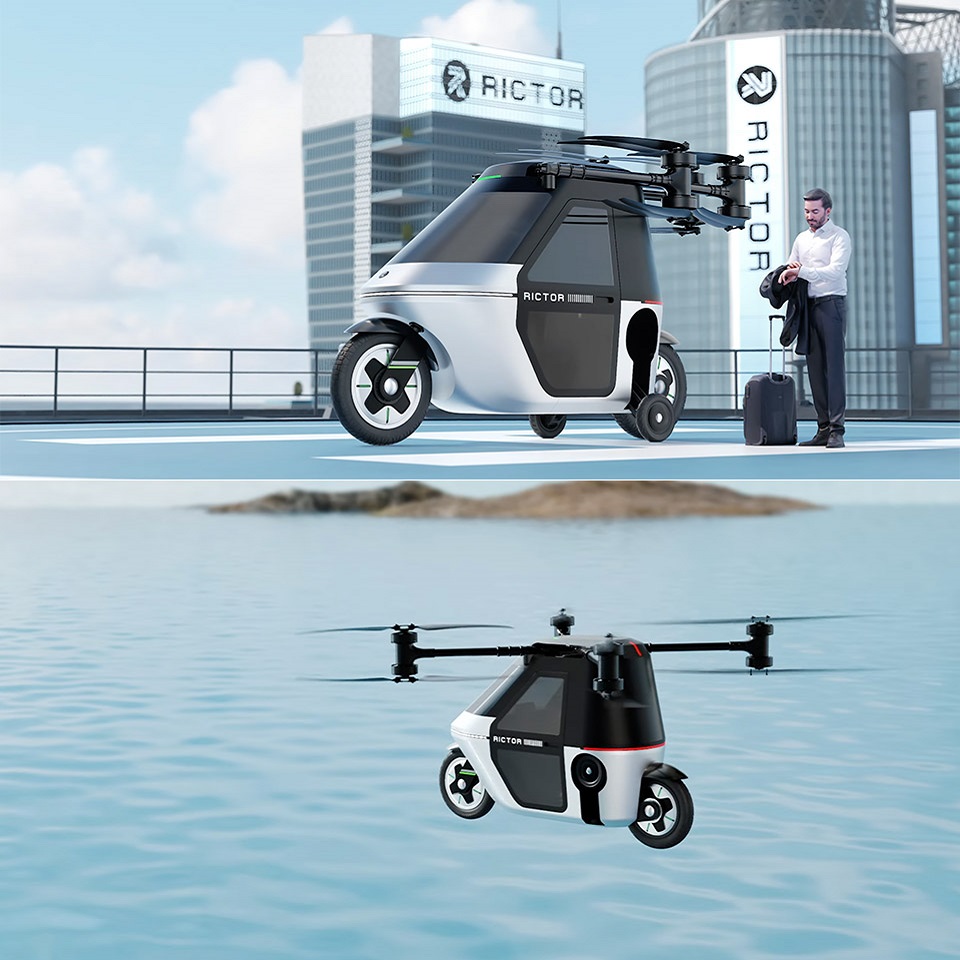The concept of flying motorcycles has long been a staple of science fiction, capturing the imagination of many. However, recent technological advancements have brought this once-fantastic idea closer to reality. Flying motorcycle, or personal air vehicles (PAVs), are poised to revolutionize urban mobility in ways previously thought impossible. As cities continue to grow and traffic congestion becomes a glaring issue, these innovative vehicles offer exciting solutions for transportation challenges. This article will explore how flying motorcycle can change urban mobility, their technological advancements, regulatory challenges, and the potential impact on daily commuting.
Understanding the Flying Motorcycle
Defining the Flying Motorcycle
Flying motorcycles are vehicles that combine the functionality of both motorcycles and aircraft. These machines utilize rotors or wings to achieve flight, allowing them to travel above the ground. The design of flying motorcycles can vary significantly, from multi-rotor drones scaled up for human transport to hybrid models resembling traditional motorcycles with added flight features.
The appeal of flying motorcycles lies in their potential to alleviate urban traffic congestion. By taking to the skies, these vehicles could bypass gridlocked streets and offer quicker, more efficient commuting options. Furthermore, they could provide unique opportunities for travel, transforming the way people navigate their cities.
Early Developments and Innovations
Some pioneers have already begun developing prototypes of flying motorcycles. Companies such as Jetpack Aviation, PAL-V, and Aerofugia have invested time and resources into bringing these vehicles to market. Early prototypes have demonstrated the feasibility of flying motorcycles, showcasing various technologies such as vertical takeoff and landing (VTOL), electric propulsion, and advanced navigation systems.
As technology progresses, the hope is that these innovations can be refined and commercialized. With the rise of electric batteries and eco-friendly solutions, flying motorcycles may become more sustainable and accessible, aligning with urban demands and environmental concerns.

Potential Benefits of Flying Motorcycles
Reducing Traffic Congestion
One of the most significant advantages of flying motorcycles is their potential to reduce traffic congestion in urban areas. Cities around the world struggle with overpopulation and clogged streets. Commuters spend countless hours in traffic, which not only reduces productivity but also contributes to stress and environmental pollution.
Flying motorcycles can help mitigate these issues by providing an alternative mode of transport that operates primarily in the air. With the ability to avoid ground traffic, these vehicles could significantly cut down travel times. For instance, a journey that would typically take 30 minutes by car may be reduced to just 10 minutes by flying motorcycle, making the overall urban transport system much more efficient.
Environmentally Friendly Transportation
As urban centers grow, so do concerns about environmental sustainability. Flying motorcycles often utilize electric propulsion systems, which can minimize air and noise pollution. The adoption of electric motors also means that flying motorcycles can be integrated into renewable energy sources, leading to a more sustainable transportation option.
This shift can have profound benefits for cities that are striving to meet environmental goals. By reducing greenhouse gas emissions, flying motorcycles can contribute to cleaner air quality and a healthier urban environment. The increased focus on eco-friendly transportation options is essential for addressing the challenges posed by climate change.

Technological Innovations Driving Flying Motorcycles
Advancements in Battery Technology
A critical factor in the development of flying motorcycles is advancements in battery technology. Efficient energy storage is essential for any electric vehicle, especially when it comes to flight. Recent innovations in lithium-ion batteries and the exploration of solid-state batteries have paved the way for longer flight times and increased reliability.
Enhancements in battery technology mean that future flying motorcycles can carry heavier loads while maintaining a reasonable flight time. These developments will enable manufacturers to design vehicles that are not only functional but also safe and easy to operate.
Safety is a significant concern when introducing flying motorcycles to urban environments. To address this, developers are incorporating advanced navigation and safety systems. Technologies such as GPS, artificial intelligence, and collision avoidance systems are vital for ensuring safe operation in densely populated areas.
Integration with smart city infrastructure is another critical component. Flying motorcycles may connect to traffic management systems, allowing for smoother air traffic control and preventing accidents. By investing in robust navigation systems, manufacturers can enhance the safety and reliability of flying motorcycles, making them a viable transportation option.

Regulatory Challenges Ahead
While the potential for flying motorcycles is exciting, significant regulatory hurdles must be overcome. Governments around the world will need to develop new frameworks for overseeing the use of personal air vehicles. Air traffic regulations must be adapted to ensure safe operations in urban settings while managing airspace efficiently.
The introduction of flying motorcycles could create a new category within aviation regulations, necessitating guidelines for pilot certification, airworthiness standards, and operational protocols. Collaboration between aviation authorities and vehicle manufacturers will be essential to establish these regulations.
Public Acceptance and Safety Concerns
Public acceptance will play a crucial role in the success of flying motorcycles. Concerns over safety and noise pollution may lead to skepticism among potential users. Educational campaigns highlighting the benefits and safety features of these vehicles will be necessary to build trust.
Additionally, ongoing pilot training and adherence to safety regulations will need to be emphasized. As individuals become more familiar with flying motorcycles and their capabilities, acceptance may grow. Transparency and communication will be key in addressing safety concerns and ensuring a smooth transition to this new mode of transportation.

Integration with Existing Urban Infrastructure
Adapting Current Transportation Systems
For flying motorcycles to be successful, they must integrate into existing urban transportation systems. This involves creating designated landing and takeoff areas, known as vertiports, which would allow for safe and organized operations. Urban planners will need to assess how vertiports can be incorporated into cityscapes without hindering existing infrastructure.
Furthermore, public transportation systems may need to adapt to facilitate smoother connections with flying motorcycles. For instance, developing comprehensive routes and connections between flying motorcycle services and public transit can streamline urban mobility and make it more efficient.
Smart City Initiatives
The emergence of flying motorcycles aligns with the broader initiative of developing smart cities. Smart city technologies, such as sensors, data analytics, and IoT connectivity, can enhance the operational efficiency of flying motorcycles. Integrating these vehicles into smart city infrastructures can lead to improved resource management, air quality monitoring, and traffic management.
By embracing smart technologies, cities can create a cohesive transportation ecosystem that includes flying motorcycles. Enhanced data exchange between flying motorcycles and urban infrastructure can improve flight paths, reduce congestion, and minimize delays.

The Future of Commuting
A Shift in Daily Life
The advent of flying motorcycles may lead to a dramatic shift in the way individuals commute. Imagine a scenario where people can hop on their flying motorcycle and take to the skies to beat traffic. Daily commutes could transform from stressful journeys into enjoyable experiences, drastically altering daily routines.
This shift would not only impact the time spent commuting but also influence the design of urban living. More people might consider moving farther from city centers if they have access to faster and more efficient transportation options. This shift could lead to changes in housing patterns and urban planning, as communities embrace mobility innovations.
Impact on Job Market and Skills
With the introduction of flying motorcycles, new job opportunities may emerge in sectors related to maintenance, piloting, and infrastructure management. Training programs will need to be developed to equip individuals with the skills required to operate and maintain these innovative vehicles.
The flying motorcycle industry could spur economic growth, creating jobs not just in aviation but also in technology, engineering, and manufacturing. As businesses adapt to this new mode of transport, the job market will continue to evolve in exciting ways, emphasizing the importance of education and training.
Embracing Change in Urban Mobility
Flying motorcycles promise to revolutionize urban mobility by offering a unique solution to the challenges of congested roads and pollution. With their ability to soar above traffic and provide efficient transportation, they present an exciting vision for the future of commuting. As technological advancements continue to evolve, the prospect of integrating flying motorcycle into our daily lives appears increasingly feasible.
However, addressing regulatory challenges and ensuring public acceptance is essential for success. Collaboration between governments, manufacturers, and urban planners will be crucial in creating a safe and effective infrastructure for this innovation.
In summary, the flying motorcycle represents a transformative leap in transportation. By embracing this change, we can pave the way for a future where urban mobility is not just a necessity but an enjoyable experience. As we look ahead, the convergence of technology and urban planning has the potential to enhance our lives in ways we can only begin to imagine. The sky truly is the limit!

Leave a Reply